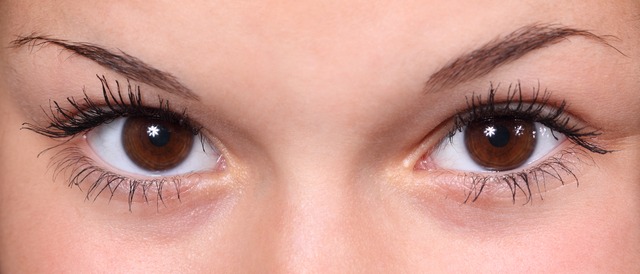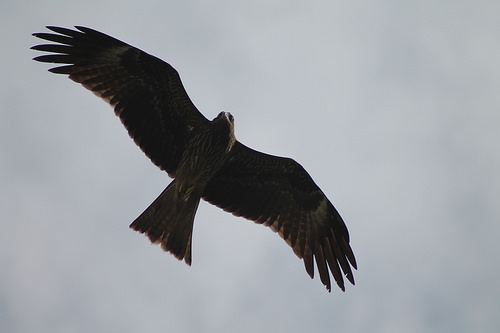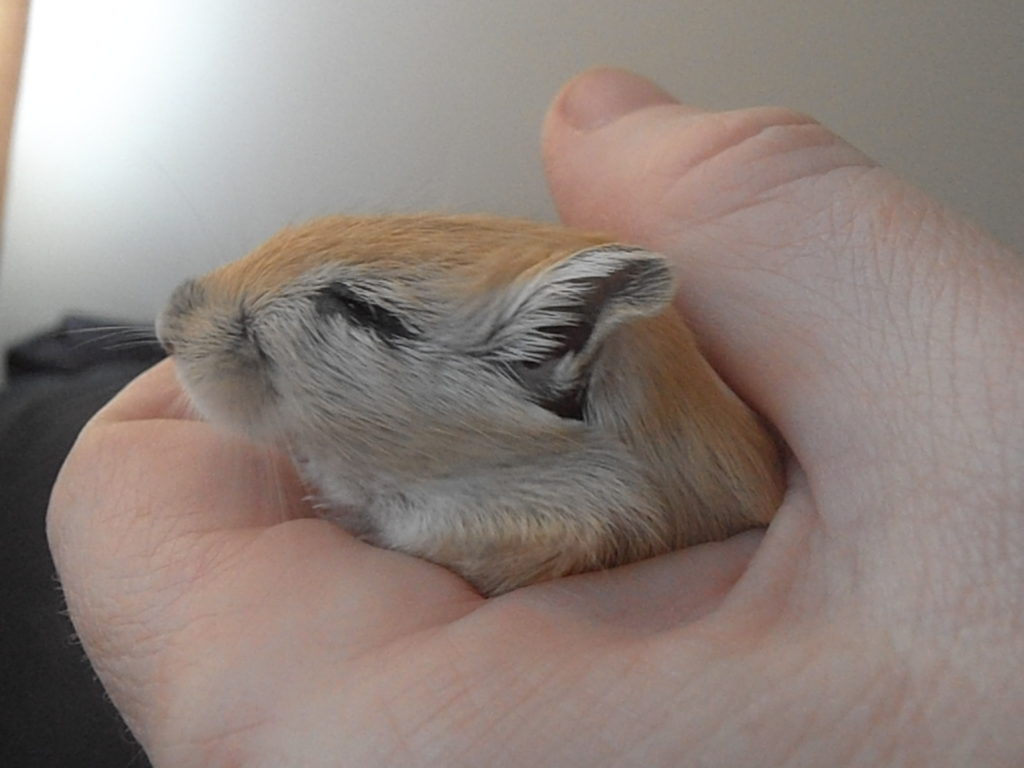Gerbils can certainly make their way around in dark places without having any trouble at all.
The word ‘see’ can mean a few different things in the animal word – including seeing colour like us; seeing things in focus like us; being able to move around safely without bumping into things; or being able to move around using other body parts to navigate with.
If you are using the word ‘see’ to mean actually visually with their eyes like humans do – then yes – gerbils can see in the dark – and they are much better at it than humans.
Nobody can see with their eyes if there is no light at all of course – as eyes have evolved because of that light. Without light at all – nobody’s eyes would work.
So – taking ‘the dark’ to mean at low light levels as you would find at night – then yes again – gerbils can see things at night and can react to them and move safely and quickly both above and below ground.
The reason is because gerbils are mammals and have rod and cone cells in their eyes just as humans do – but they evolved theirs with a gerbil-shaped twist.

Cones & Rods:
The cone cells are designed to be in the centre and main body of the eye – the way you are looking – and are able to see colours (of various types and in various forms depending on the animal).
These cones work best only when there is a lot of natural light – as you must remember from school that all colours that animals on Earth can see are found in spectrum of sunlight.
They are highly specialised cells which are able to receive and interpret that light – and help the eyes to focus on specific differences in that light. These recognised differences allow animals to differentiate between safe foods as basically they help is see things in exact detail.
However, the rod cells are more sensitive – but not really to colour – just to the light itself.
As a result of this – they aren’t the mainstay of us humans. They are found around the edges of the eyes in humans rather than in the central focal point – the fovea – as we humans like to see things precisely and clearly at all times (with our cones).
This is why at night – you often see something in the corner of your eye.
The cones won’t see it as there isn’t enough light – but these rod cells are very well adapted to see any form of light where there is no colour – and they pick up a lot.
You see something in the corner of your eye with your night vision cells, and then turn your full focus cells towards it to try to see it more clearly – but it disappears every time.
Us humans can’t see details well in low light – even though we want to – hence the massive lighting industry we have developed as a result. We have evolved our behaviour in most cultures to use strong white light.
Night Vision Goggles:
So how much better would your vision be if you had eyes full of rod cells and you lived in places where there was less light – for example in an underground burrow?
Exactly. Gerbils have evolved in places with less light in general and so over time they have evolved slightly different eyes to us humans – and it suits them. Gerbils don’t need to do needlepoint or repair the cogs in a watch…


Most animals don’t need to see specific things in great detail – they have evolved their other senses to do that – they just need to know whether something is there or not.
Like gerbils.
They don’t need to know the species of snake coming towards them or be able to identify the type of hawk that is approaching them overhead – they just need to know that it is possibly a snake or possibly a hawk that is approaching them.
Even if it isn’t either of those – at least the gerbil would have made it back safely to its underground den and live to see another day…
Similarly with food and tunnels – you don’t need to see them if you can sense them, touch them, smell them or taste them.
Visual detail isn’t as important to gerbils as it is to us humans. They made a compromise with their eye strategy – and as a result, they just need to see movement with them.
And if you ever caused a shadow to move across your gerbils’ tank – you will know how responsive they are!


Too Much Light:
Us humans have night vision too – if we want it. You just have to either be patient or clever.
When most light is removed from a room we are in, we can gradually see more and more things as our pupils get bigger (letting in more light to the corners of our eyes) and our rod cells can take over the main job of seeing.
However, if you look at a quick flash of light – you lose your night vision again temporarily as your pupils instantly shrink again – closing off access to all the rod cells.
You can see this in action at night if you want. Next time you want a midnight snack – try to keep one eye completely closed when you flick on the light. Eat your fill and then when you turn the light back off – your closed eye will still have a big pupil and all the rod cells will still be working – allowing you to walk safely in the dark back to bed avoiding any foot stubs or table corners.
Gerbils of course don’t have kitchen lights that appear anytime during the night or any lights to lead the way in their underground lair – so their rods are ALWAYS working perfectly helping them to see in the dark.

Other Ways To See:
Of course, eyes are just a fascination with humans – most other animals don’t focus so much of their life on just their eyes.
Gerbils – for example – have great big whiskers on their face which are wired right up to the brain. They tell the brain information about where things are and the brain interprets this in exactly the same way as how the nerves would translate an eye image – it makes a picture in the gerbils mind.
Of course – they haven’t seen the sides of their tunnel with their whiskers (and the whole process is infinitely more complicated than this) but they can interpret the signal from their whiskers as genuine information about their surroundings – just like you could with your outstretched hands.
Basically – “a wall is on my left – don’t walk into it”.
Just like our hands – gerbils have more sensory ability in their feet and so can perceive where they are from walking in or on a different surface.
In the same way our bare feet can register hot and cold, bumpy, soft and of course wet – so can gerbils’ feet – but in much greater detail as their life depends on it. We just do it for fun.


Hearing and smelling are other senses we can relate to with gerbils for ‘seeing/knowing’ where something is, but there are probably quite a few other ways gerbils can see/know where they are or who is near them.
These could be based on UV light, pressure, vibration, smell, chemical receptors etc – all things that we don’t really pick up on during a normal day.
Blind Gerbils
We know that gerbils don’t need their eyes to succeed in a domestic environment as we have heard many stories of blind gerbils. I had one myself.

She had no trouble at all working her way around her tank with layers, levels, tunnels and all sorts in there – basically these gerbils can see in the dark.
My little girl always found water and food – especially the mealworms and wax worms – and wasn’t worried about leaping between or off ledges once she knew they were safe.
In the wild, she would have failed to see predators approaching herself of course and would have been at a slight disadvantage, but I don’t think too much overall. She was always very quick to react to the foot thumps and rushing around of others and move somewhere safe.
All gerbils like to know where things are and often repeatedly walk around their environment to map it out for later and keep it clear – both of which are very important. If a predator comes near – they want to know the way home – and they want to get there fast.
And if you are a gerbil – this works perfectly well whether you have eyes or not.